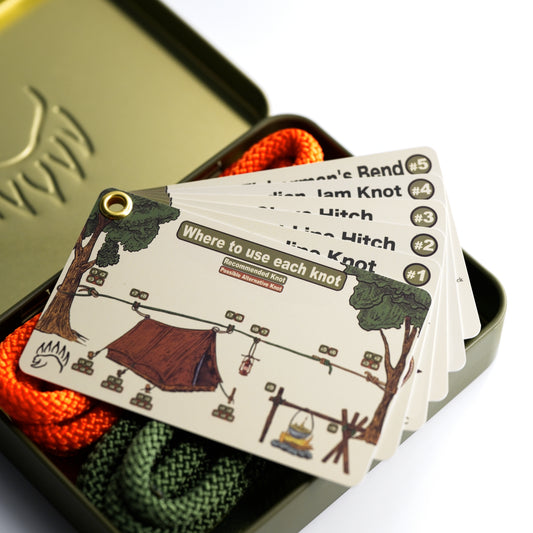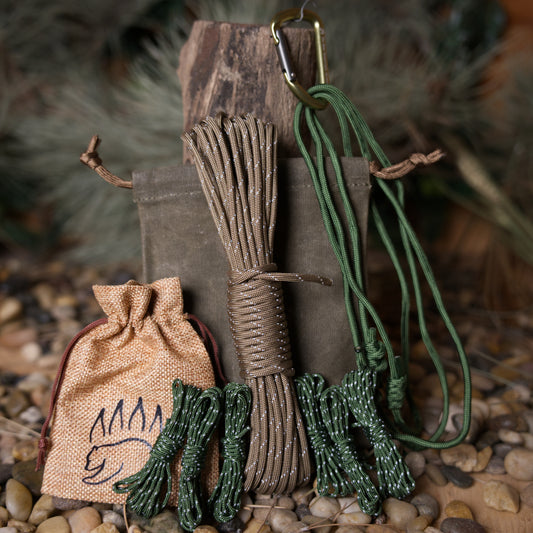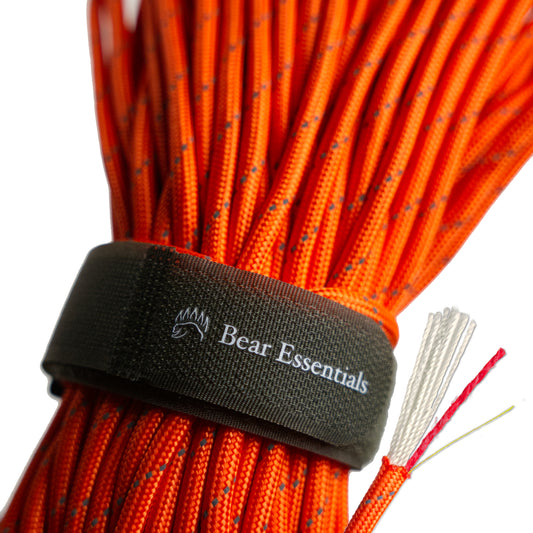How to Tie the Bushcraft/Woodland Zip Tie
Usage
The Bushcraft/Woodland Zip Tie is commonly used to bundle gear like sleeping bags or tarps in bushcraft and camping. Its self-tightening design is ideal for compressing loads, offering secure hold with easy release. Compared to the Constrictor Knot, which binds tightly but is harder to release, this knot cinches securely and unties easily with a pull.
Why Learn the Bushcraft/Woodland Zip Tie?
Its self-tightening mechanism ensures secure bundling with easy release. This knot is a go-to for outdoor enthusiasts needing reliable, quick fastening.
Common Uses
-
Bushcraft:
- Bundles sleeping bags or tarps for compact storage.
- Secures food bags to branches, away from wildlife.
-
Camping:
- Ties down tarps for quick shelter setups.
- Compresses gear for efficient packing.
-
Utility:
- Organizes cables or tools in workshops.
- Secures light loads for transport or storage.
ABOK Number
(Ashley Book of Knots)
Other Names
Category
|
Notable Features
- Secure cinching: Tightens under load, holding gear firmly in place.
- Quick release: Unties with a pull, saving time during breakdown.
- Versatile use: Perfect for shelters, food storage, or household bundling.
- Simple to tie: Easy to learn, even for beginners in bushcraft.
- Adaptable: Works with various rope types and bundle sizes.
Variations
No true variations are listed in the provided knot index. For a quick-release option, form the initial loop with a bight instead of an overhand knot for faster untying.
Similar Knots
Canadian Jam Knot vs. Bushcraft/Woodland Zip Tie
- Pros: Identical in function, widely recognized in bushcraft for bundling.
- Cons: May be referred to differently, causing confusion in naming.
Constrictor Knot vs. Bushcraft/Woodland Zip Tie
- Pros: Provides an extremely tight grip for heavy loads.
- Cons: Harder to untie after tension compared to the Zip Tie’s easy release.
History
The Bushcraft/Woodland Zip Tie, often called the Canadian Jam Knot or Arbor Knot, likely evolved from traditional binding knots used in maritime and arborist contexts. Its self-tightening design made it popular in bushcraft for securing gear, as noted in modern outdoor communities. While not explicitly listed in The Ashley Book of Knots, its similarity to the Arbor Knot suggests a shared lineage, adapted for versatile outdoor use.
Security Level
The Bushcraft/Woodland Zip Tie is reliable for bundling and compressing static loads, maintaining a firm grip under tension. It’s less suitable for dynamic or critical loads, as it may slip or jam if overtightened. For slippery ropes, ensure proper technique and consider a double wrap for added grip.
Downsides
- Jamming risk: Can be hard to untie if overtightened.
- Not for dynamic loads: Unsuitable for critical or moving loads.
Structure
- Tie an overhand knot near the end of the rope to create a stopper loop.
- Wrap the working end around the object or bundle you’re securing.
- Pass the working end through the stopper loop.
- Pull the standing end to tighten, compressing the bundle securely.
- To release, pull the working end to loosen the knot.
Pro Tip: Use a smooth rope like paracord for easier release and avoid overtightening to prevent jamming.
FAQ
Is the Bushcraft/Woodland Zip Tie strong enough for heavy loads?
It’s reliable for static bundling like tarps or gear, but not for heavy or dynamic loads.
What ropes work best for the Bushcraft/Woodland Zip Tie?
Paracord or nylon ropes ensure secure cinching and easy release.
How does the Bushcraft/Woodland Zip Tie compare to the Constrictor Knot?
It’s easier to untie but less tight under extreme tension.
Can the Bushcraft/Woodland Zip Tie be used for climbing?
No, it’s not safe for climbing or life-support applications.
Why choose the Bushcraft/Woodland Zip Tie over a zip tie?
It’s reusable, biodegradable with natural cordage, and leaves no trace, ideal for bushcraft.
Important Notes on Safety
Common failure points include overtightening, which can jam the knot, or using it for dynamic loads, which may cause slipping. Always verify it’s used for static, non-critical tasks.
-Check rope condition for wear before tying.
-Test the knot’s release before relying on it.
-Practice tying in low-risk settings to ensure proficiency.









